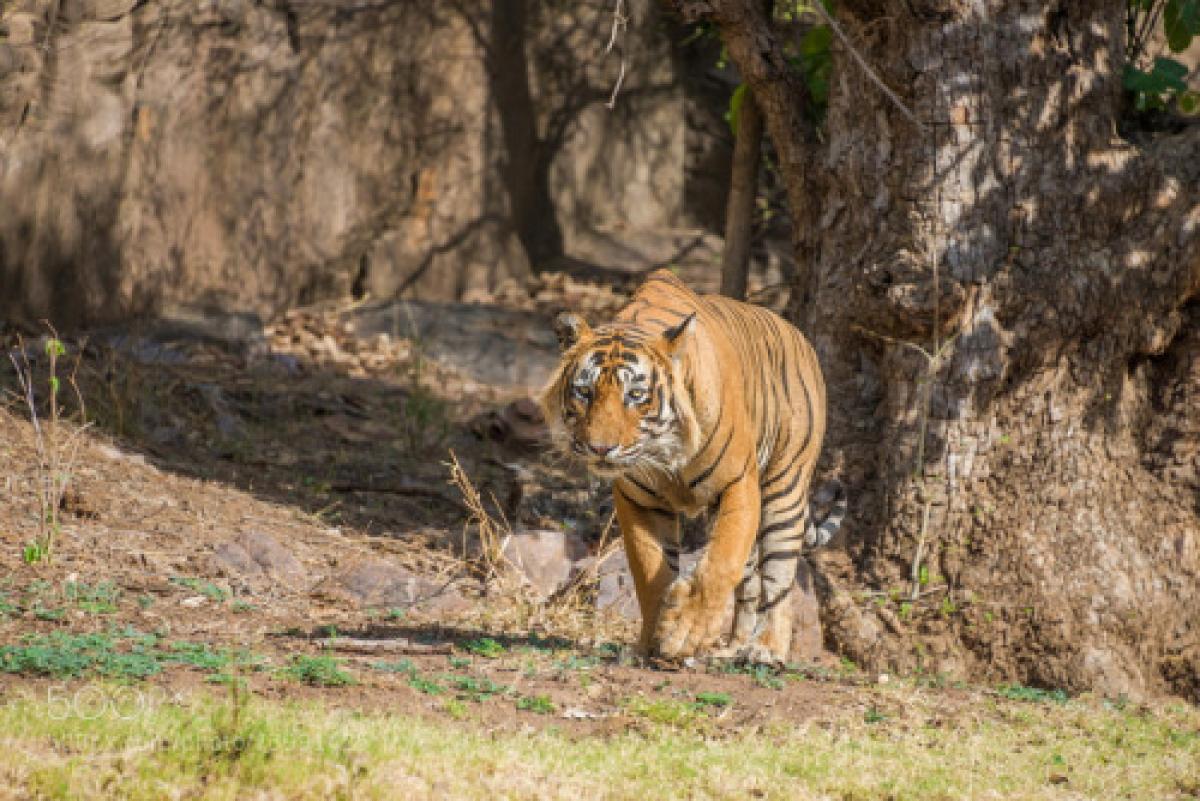Live
- IIP growth falls to 3.5% in Oct
- Easing food prices lower retail inflation to 5.48% in November
- Space allocation for packaging units at MSME parks on anvil
- Maha Kumbh: Yogi reviews preparations
- Gadkari on accidents: I try to hide my face in meetings abroad
- Abetment of suicide: Mere harassment not sufficient to find accused guilty says SC
- 6.79L homes to receive water under Amrut-II
- Cops prohibit assembly of 5 or more near Group-II exam centres
- Avanthi, Grandhi quit YSRCP, lash out at Jagan
- Dharani portal services paused till Dec 16
Just In

Before it takes action on \'relocating\' Indian tigers, Cambodia\'s forestry administration is on a special mission - scouting for signs of indigenous tigers in its dense jungles, where according to reports they are \"functionally extinct\".
Before it takes action on 'relocating' Indian tigers, Cambodia's forestry administration is on a special mission - scouting for signs of indigenous tigers in its dense jungles, where according to reports they are "functionally extinct".
"More than hundred cameras have been installed and more are being set up in the southern part of the Cardamom mountains and eastern part of the Mondulkiri Protected forests to look for the signs of tigers," Keo Omaliss, Director, Department of Wildlife and Biodiversity, Cambodia told IANS.
Omaliss said they are also searching for tigers in the north-eastern region of Cambodia, a large part of which comes under Mondulkiri and which also shares border with the neighbouring Yok Don National park in Vietnam.
He said they are doing it with the help of Wildlife Alliance, a non-profit wildlife conservation organization which has programmes in Cambodia.
The last wild tiger in Cambodia was spotted in 2007 in the Eastern Plain dry forests landscape of Mondulkiri forests.
Cambodia lost most of its tigers due to poaching and deforestation. It is now left with vast "tiger-less" bio-reserves, which includes the 1,700 sq km of Mondulkiri Protected Forests, 1,500 sq km Lomphat Wildlife Sanctuary, 2,000 sq km Seima Protected Forests - a mixed evergreen forest, and 470 sq km of Phnom Nam Lyr Wildlife Sanctuary.
"This programme would also help us with tiger prey assessment. However, the focus is to get sign of any tiger out there," Omaliss said.
"Before reintroducing tigers in Cambodia over the next five years, with Indian help, we also need to prepare ourselves. We don't have intensive research on the tigers or the tiger prey," he said, adding that talks with India are on but not official yet.
Indian Environment Minister Prakash Javadekar has denied about any proposal for relocating Indian Royal Bengal Tigers to Cambodia, in Lok Sabha on Thursday, May 5.
He however, during a conference on tiger conservation last month here reiterated India's willingness to help increase the tiger population in countries where there was a low tiger count.
The prime location in Cambodia to search for tigers are the Mondulkiri Protected forests and the Cardamom Mountains covering over one million hectares of area. This is also the region where Cambodia aspires to 'reintroduce' tigers from India in two separate enclosed breeding areas.
The camera traps in Cardamom mountains, in the western and south western region of Cambodia, would also help check illegal logging in the area.
Asked what makes him believe that some Indo-Chinese tigers that once roamed in the Cambodian jungles are still alive, Omaliss added, "I am optimistic that some tigers are still roaming in Cambodian jungles silently, because that's the nature of tiger."
"There had been no report recently of hunting or poaching in the Cambodian forests. Around ten tigers were confiscated from poachers in the last five years. Besides, the area is vast and tigers are few so it's hard to spot them, but that doesn't make them extinct."
Omaliss also doesn't agree with the apprehension of some tiger experts claiming that introducing Indian tigers in Cambodia is a "bad idea".
"I dont agree that tiger introduction would not be successful. The key point is prey. If the tigers get their food then they will thrive. Indian and Cambodian jungles are not very different," said Omaliss.
A WWF report also finds tigers from India or Nepal best suited for re-introduction as the habitats are similar.
"There are tigers from different regions in the zoo of UK and USA and they are doing fine. Beside, given the right tigers and tigresses, of right age and build, the rehabilitation would be a success," Omaliss said.

© 2024 Hyderabad Media House Limited/The Hans India. All rights reserved. Powered by hocalwire.com







